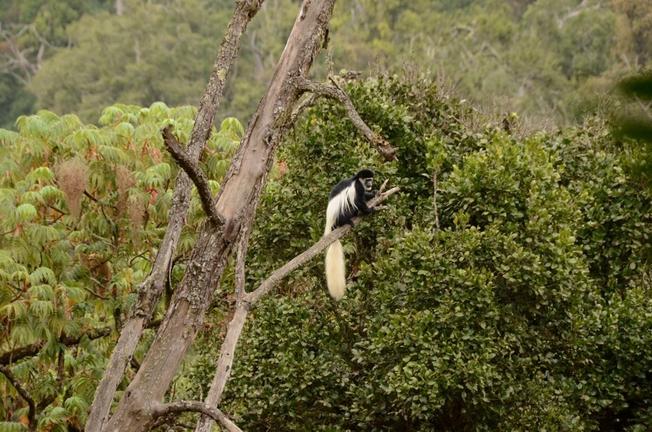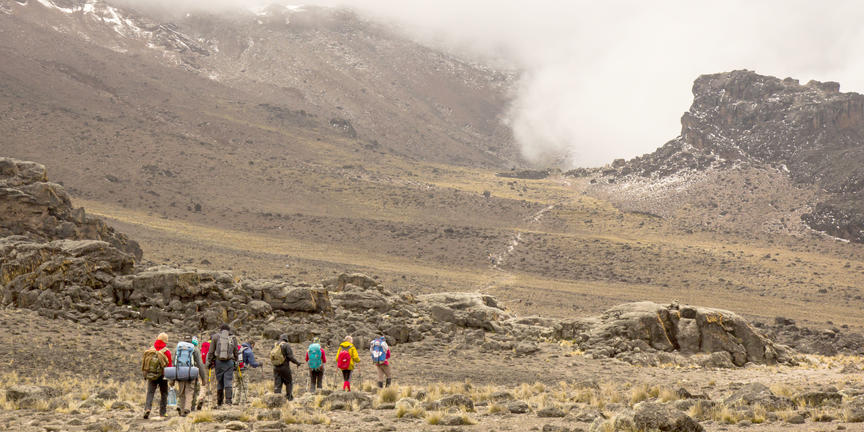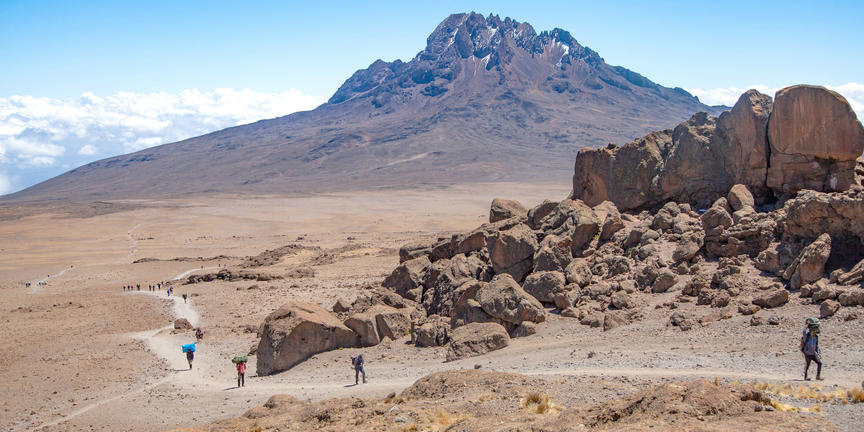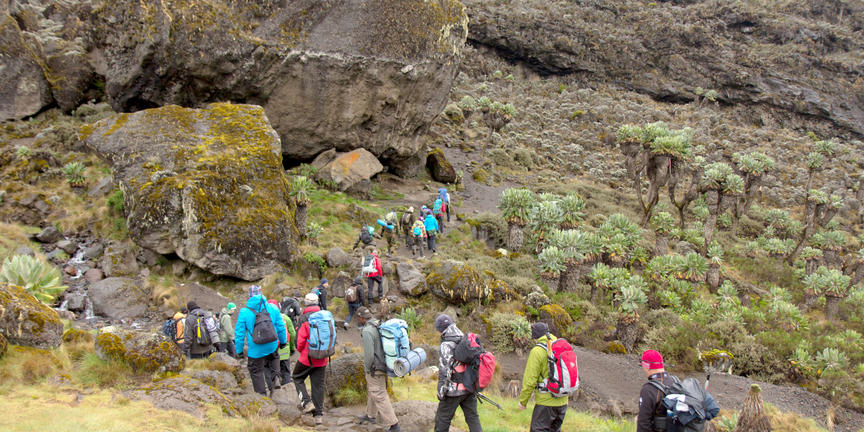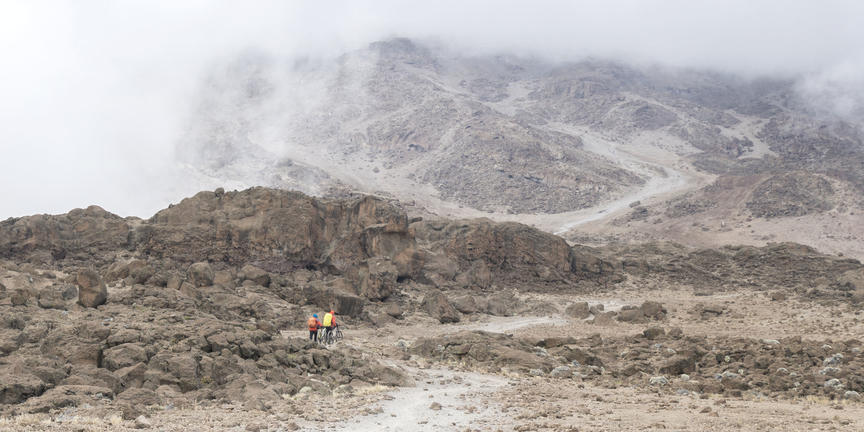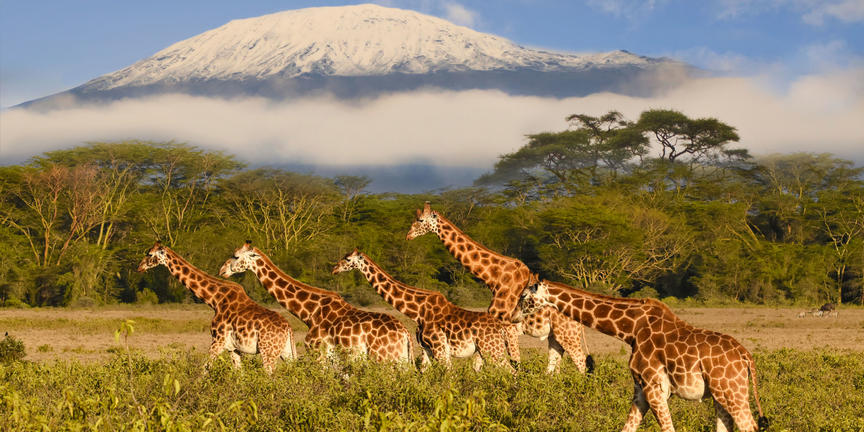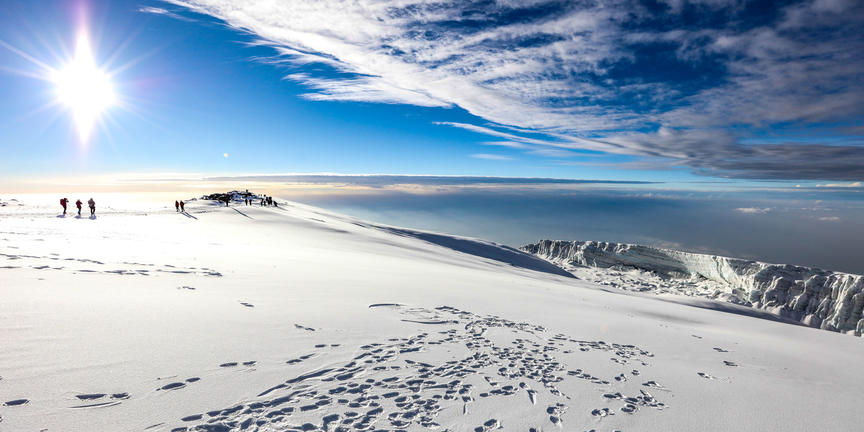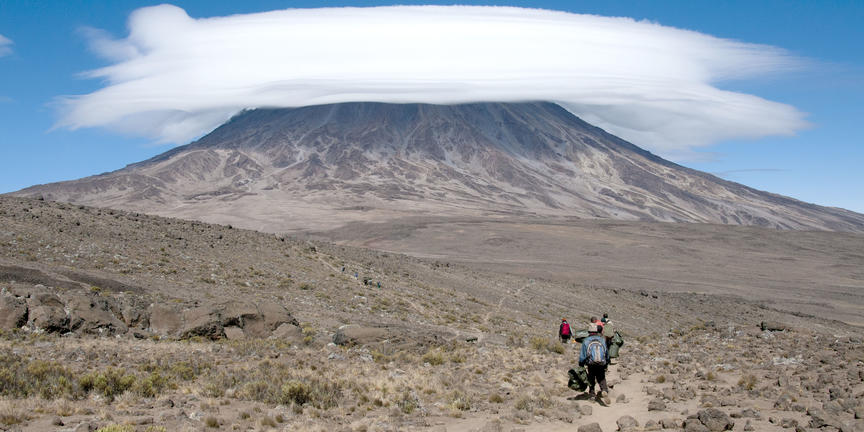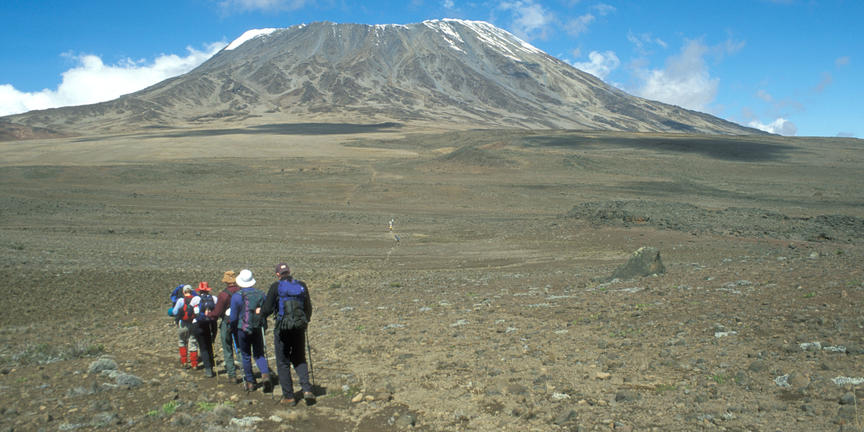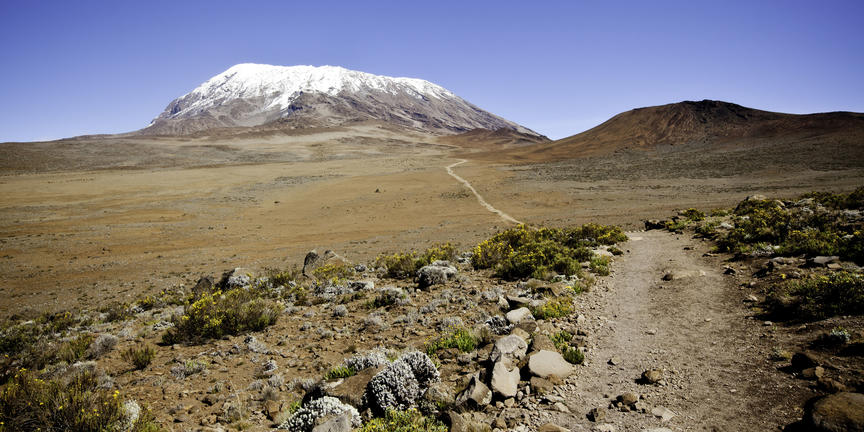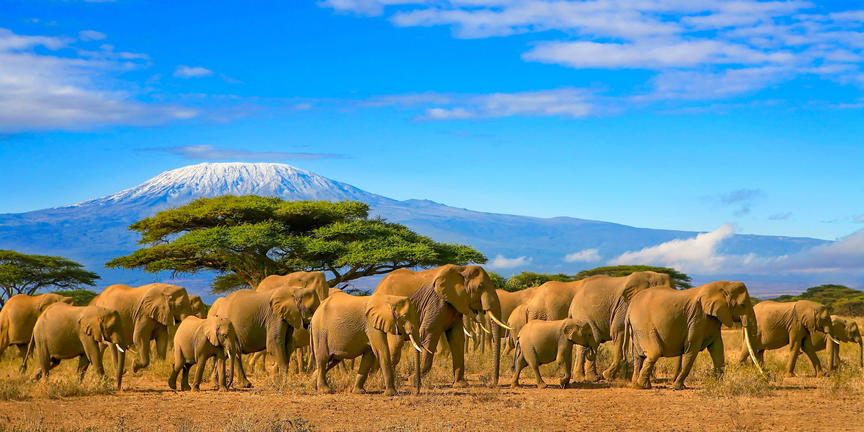Kilimanjaro, the highest mountain in all Africa at 5,895 meters, dominates the north-eastern marches of Tanzania. If you stand at its snow-encrusted summit, with an unrestricted view in all directions, you gaze upon a remarkable tract of land, its limits defined only by the curvature of the earth and the haze of distance, out to a distance of 200 kilometres.
Kilimanjaro is made up of three volcanoes: Kibo, Mawenzi and Shira. These main three vents emerged around 750,000 years ago and over thousands of years Shira was the first to die out.
Shira presently is heavily eroded, an ancient caldera filled with lava and ash with a heavily eroded rim. Mawenzi contrasts starkly, with mile deep gulleys and heavily eroded steep sides. At 5150 meters Mawenzi is linked by an 11km saddle to Kibo, the youngest dormant vent. Kibo has not erupted in recent times although may have emitted ash around 300 years ago. Sulphur and steam are still emitted.
To understand Kilimanjaro one must first have a basic understanding of the events that led to its creation. Kilimanjaro lies in a tectonic line intersection, linked to the massive rift valley that stretches from the borders of Turkey to the Mozambique Channel. The rift valley system is part of a constructive plate margin, which, on a larger scale, involves two parts of the African plate (the Nubian to the West and Somalian to the East) and the Arabian plate. The effect of these plates moving apart resulted in a vast array of geological features, not least a number of volcanoes along its length; the tallest being Kilimanjaro.
Despite being 3 degrees south of the equator, Kilimanjaro has numerous glaciers. Glaciers have also been an awesome force in shaping Kilimanjaro, especially the youngest peak, Kibo. From pictures taken in 1912 compared to the present day it has been observed that Kilimanjaro has lost in excess of 75% of its ice cover, although the impressive ice cliffs on the northern and eastern side remain as do glaciers on the south and south western flanks. At projected rates the ice could be lost forever by 2015 – 2020.
A journey up the slopes of Kilimanjaro takes you on a climatic world tour, from the tropics to the arctic. The grassy cultivated lower slopes turn into lush rainforest inhabited by elusive elephant, leopard, buffalo and antelope. Higher still, heath and moorland covered with giant heathers become a surreal alpine desert and finally give way to ice, snow and magnificent beauty.
SUMMIT - Above 5000m
RAINFALL: Less than 100 mm/year
Oxygen levels are nearly half those at sea level and there is little protection from the sun’s radiation. Temperatures can plummet to as low as minus 30 on the summit. With virtually no surface water, only lichens survive here. Creatures are rare, but in the 1960’s a leopard was found frozen in the snow and three climbers were accompanied to the summit by five African Hunting Dogs who disappeared as the climbers began their descent. There are breathtaking views from the roof of Africa and into the Crater, cone and ash pit.
ALPINE DESERT - 4000-5000m
RAINFALL: Approx. 250 mm/year
The huge daily temperature fluctuations make it summer every day and winter every night. The nights are below freezing and daytimes over 35ºC in direct sun. The scarcity of water and thinning soil make inhospitable conditions for flora and fauna. 55 species of plant exist. Eland, Leopard, Serval and African Hunting dog have been spotted, but sightings are rare. Few birds can cope with the thin air and strong shifting winds. There are spectacular views of Kibo’s glaciers and Mawenzi’s dykes and the eerie moonscape of the saddle that connects the 2 peaks.
MOORLAND - 3000-4000m
Frost is regular and sunshine can be quite intense. Clusters of giant lobelias and scenecios are found at the bottom of valleys and beside streams. Wiry shrubs, herby grasses, hairy thistles and delicate flowers thrive. Eland, duikers, African hunting dogs, buffalo and elephants, civets, serval cats and leopards have been seen at this level, and lions sometimes visit the Shira Plateau. Bird life is prolific, with the most beautiful bird here being the scarlet-tufted malachite sunbird. There is no cloud belt, allowing wonderful views including those of the lava flows.
HEATH - 2800-3000m
RAINFALL: 1000mm/year
The climate is cool and clear with possible mist and fog at the forest boundary. The heath is characterized by heather and heath-like shrubs, with giant heathers up to 10m tall in the upper forest, and many striking flowers and grasses.
FOREST - 1800-2800m
RAINFALL: 2000mm/year on the south
Daytime temperatures are around 15-20ºC. This is the richest zone on the mountain – the high humidity and wide band of clouds means that 96% of the water on Kilimanjaro is in this zone. Heavy rainfall and river gorges support extremely beautiful montane rainforest. Striking flowers including orchids are swamped in clouds of beautiful butterflies. Monkeys, hornbills and turacos live amongst the lush vegetation.
